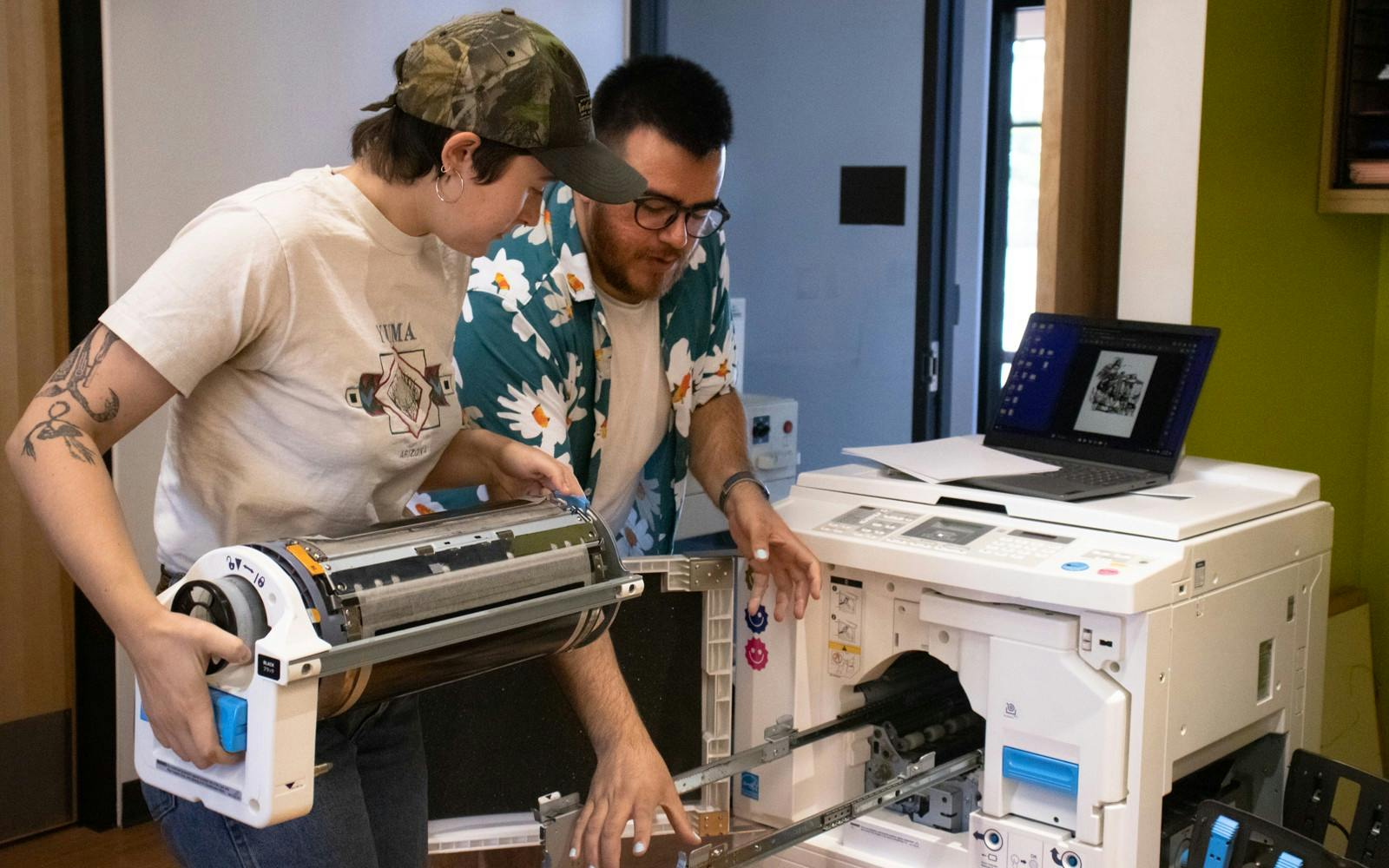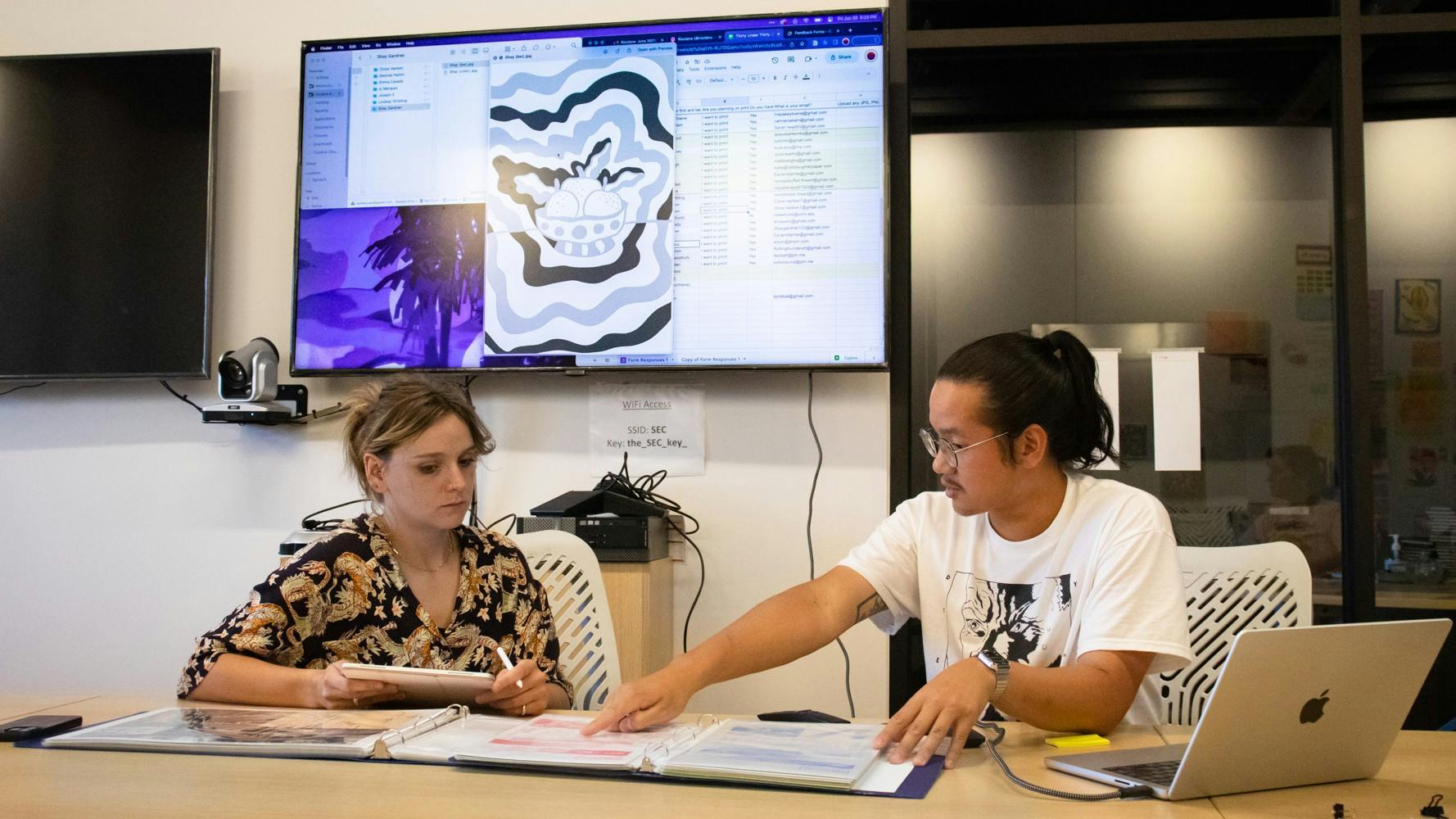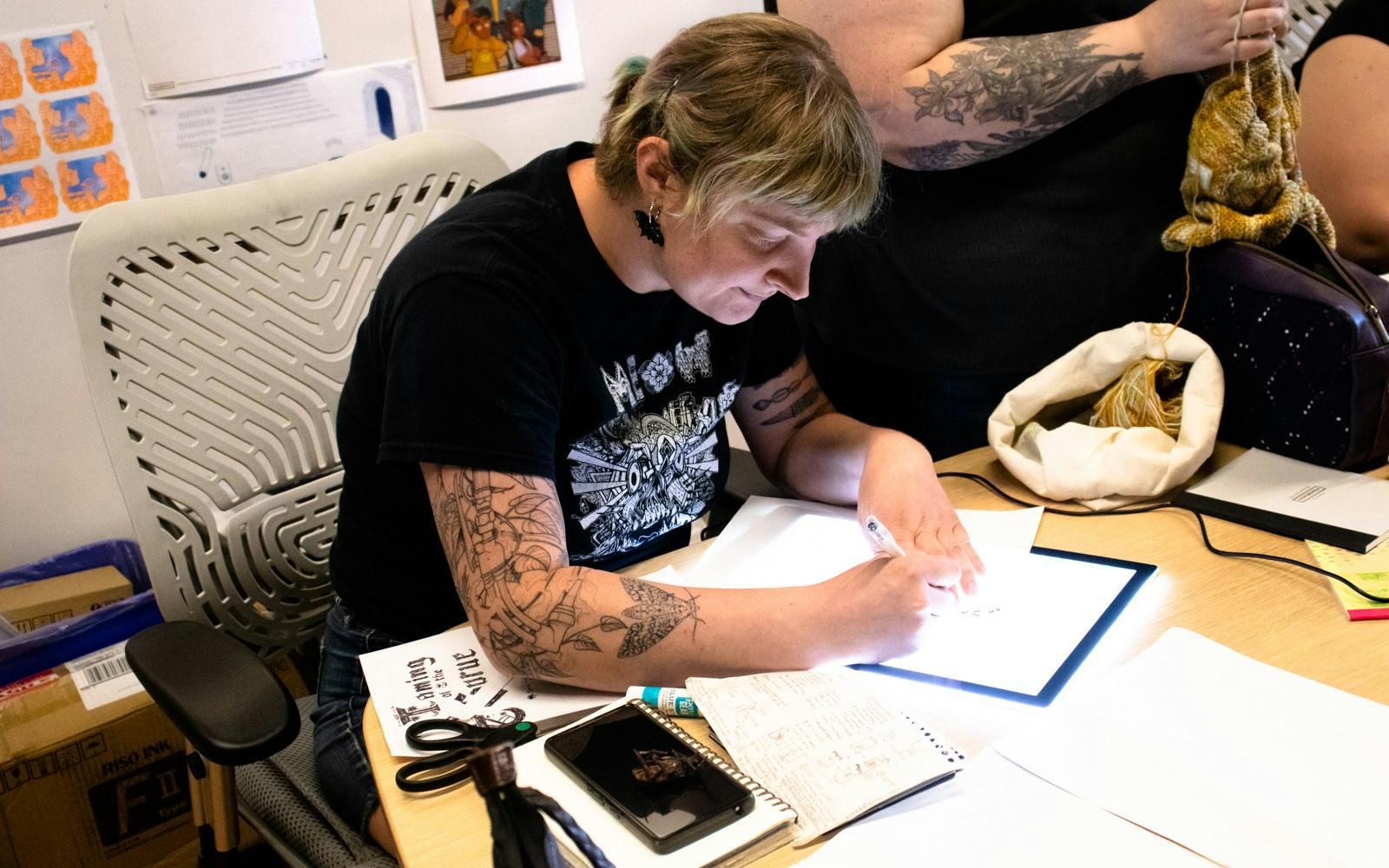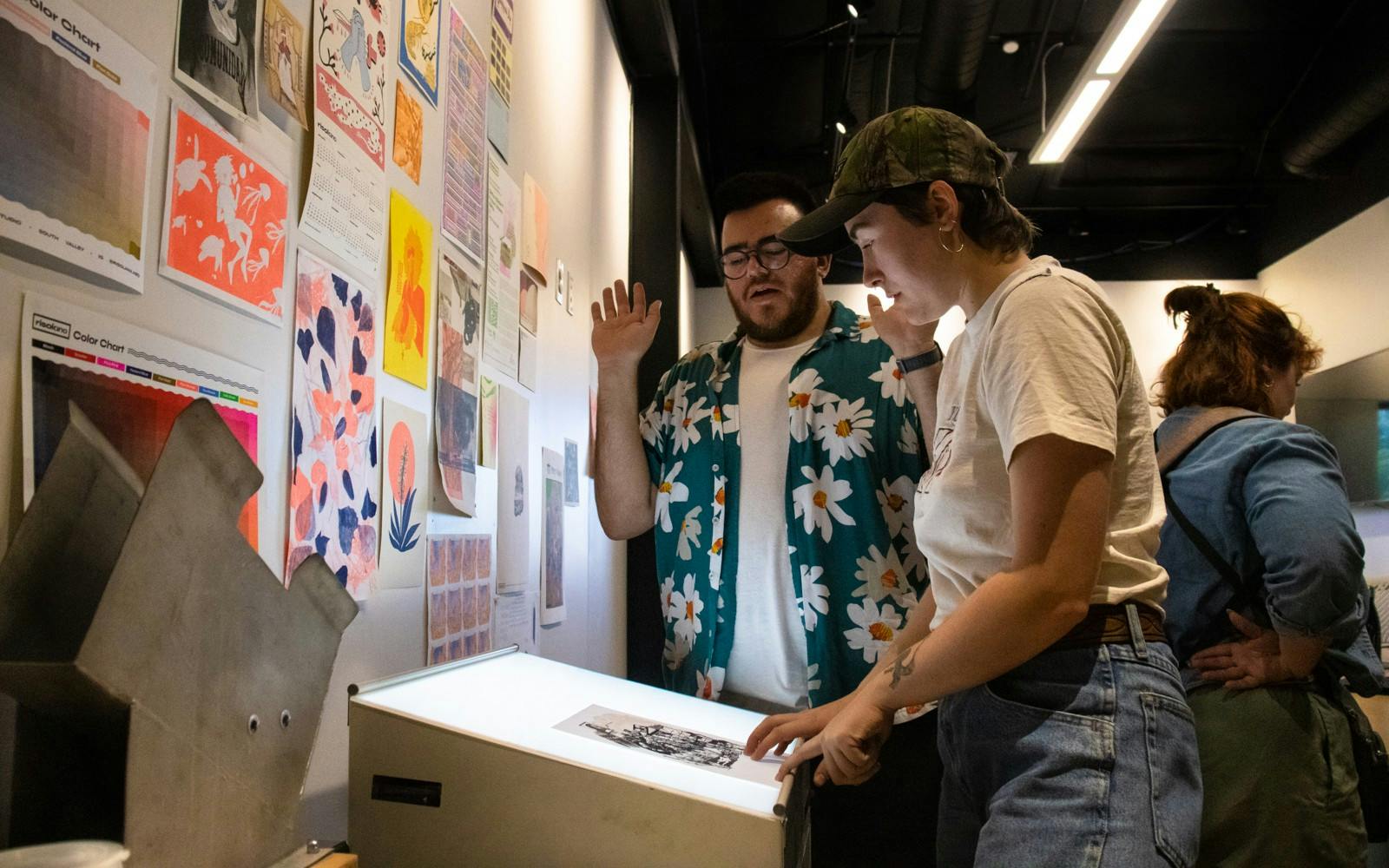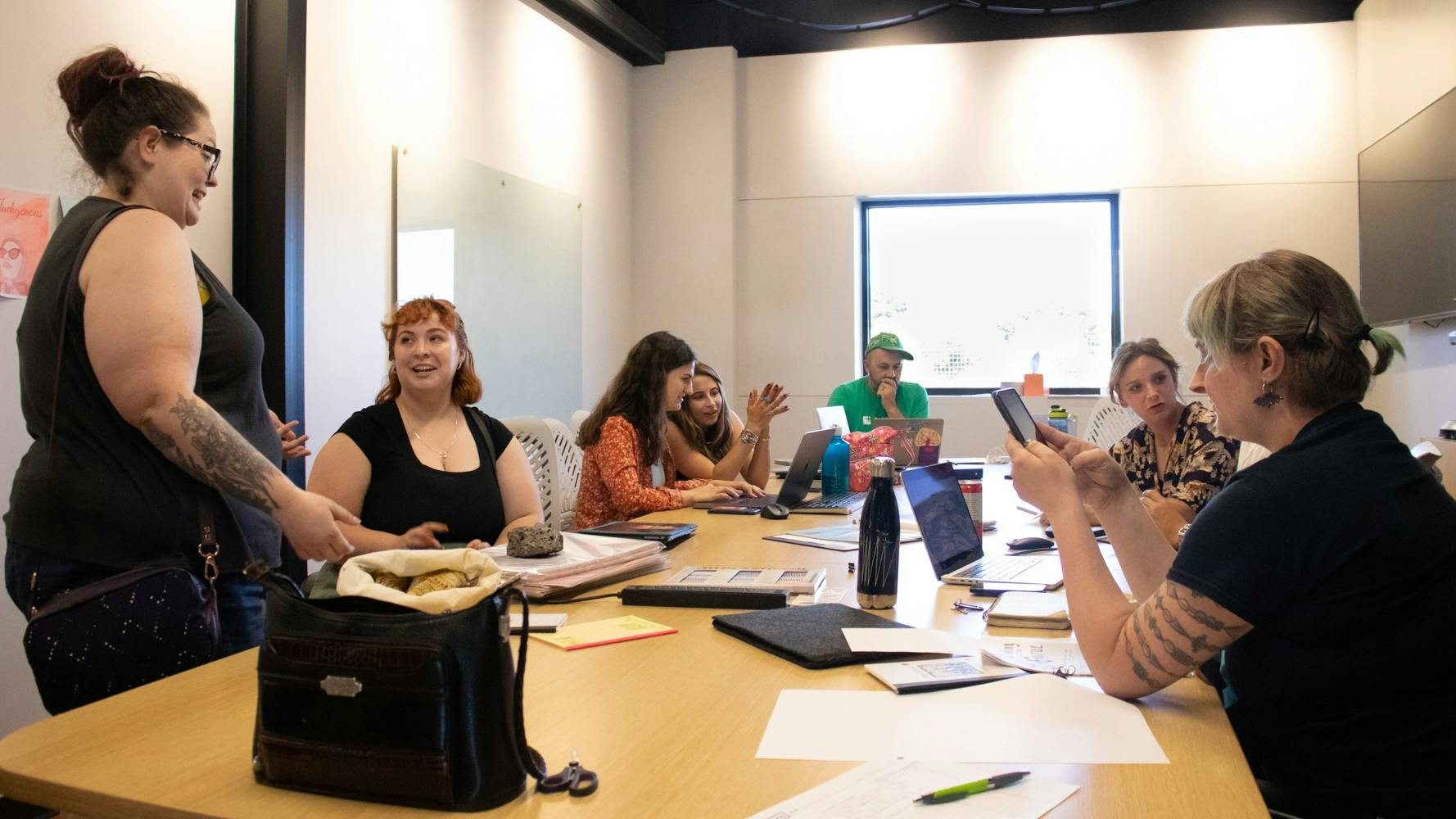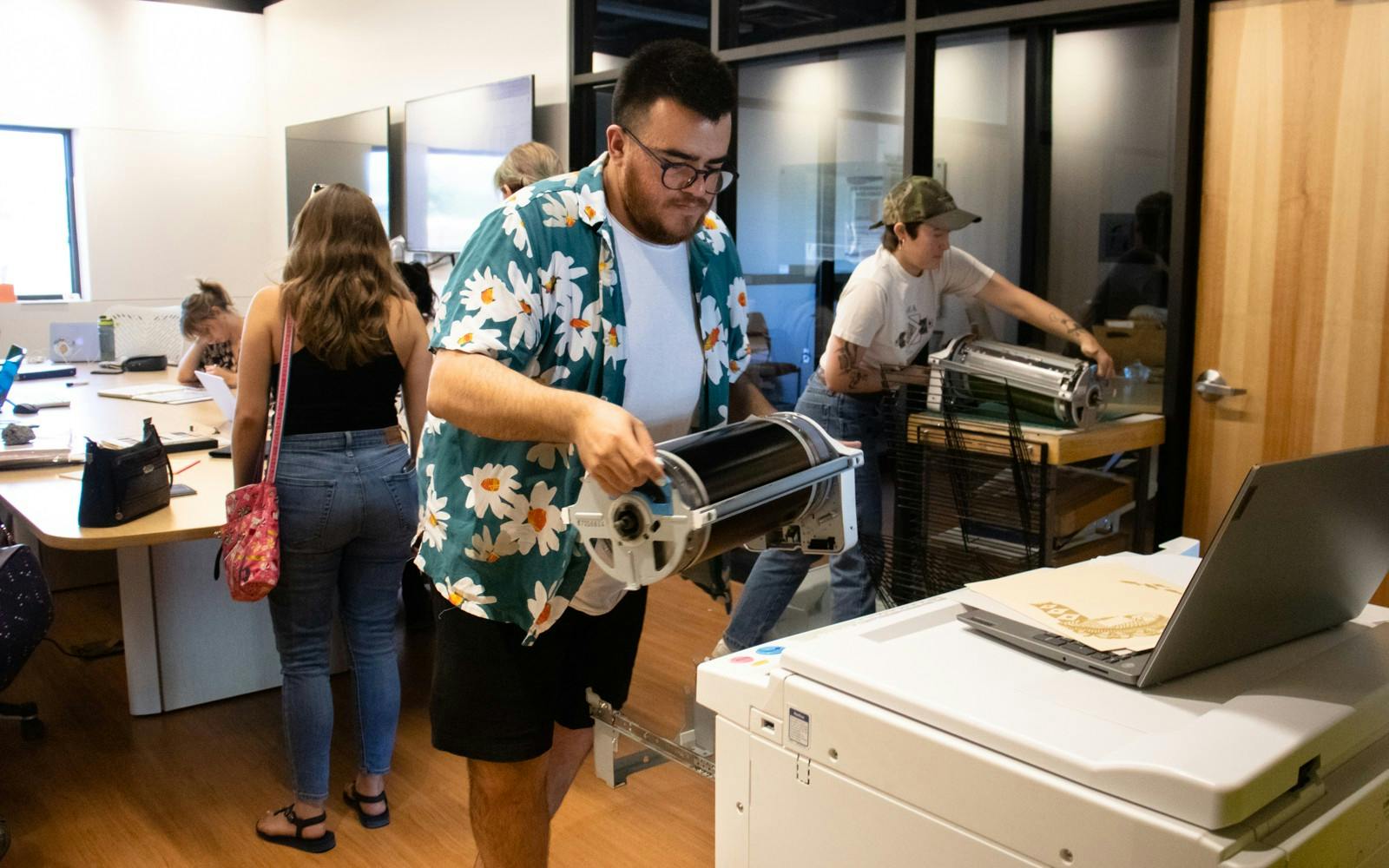An evolution of screenprinting, called Risographs, mixes a specific amount of four colors to create the artist's desired color. The risograph printer uses premixed ink and lays one color at a time. The process allows for vibrant and fluorescent effects as well as unique mistakes.
Risolana – a community risograph studio in the South Valley – aims to educate on this process.
In an effort to introduce risograph printing to the community, Risolana holds 30 Under 30 events on the 30th of every month; participants sign up, bring in any art work and create 30 risograph prints for $30, co-founder Karl Orozco said.
“(I think) of this less so as a studio where we are simply printing things and selling things, and more as an educational resource for the community to learn about riso(graphs), but through riso(graphs) learn about design, education, art, bookmaking and all the other things that make a really nice, fun and vibrant community,” Orozco said.
After Orozco originally moved to New Mexico to become a high school art teacher at Albuquerque Academy in 2020, he started Risolana – a community risograph studio in the South Valley – alongside Michael Lopez in 2021. Risograph printing captures the mistakes made throughout the artistic process, creating an aesthetic absent from standard printing.
“There's no chemical process and there's nothing about the ink fusing to the paper. It just sits on top of the paper, so that lends to the brightness of it. In some cases, it kind of smears or there can be smudges with it. If you can live with that, it's a really fun process and you get a really unique printed look,” Orozco said.
Sara Rivera, an artist and writer, has attended 30 Under 30 in the past. The event was the first time Rivera experienced risograph printing.The event can serve many different functions for attendees, Rivera said.
“People go for lots of different reasons. … You will see people do a fragment of a zine that they want to make, or a chatbook or a handbound book with text and image. You will see other people who are curious and wanna try the process,” Rivera said.
The Risolana team, Orozco and Lopez, spend time with each attendee of 30 Under 30 to help them learn how to prepare their files digitally, assign colors to their print and use the printer. The event is designed to make risograph printing accessible to people who know nothing about the process, Rivera said.
“Everything from their conception of (Risolana) to where it's located and what kinds of programs they're hoping to offer – everything has been through a very community-first model, just wanting to offer riso(graph) printing … (which) people can learn quickly. That can be a community resource for artists and people who are not artists,” Rivera said.
Creating multiple prints encourages artists to think about what they are going to do with them, Orozco said. The practice of creating multiple physical copies of a print forces people to engage with the art.
“Riso works really well with artists who have a digital toolkit. … it's a really great translator for your work into something physical. (There’s) something about a physical thing – it's harder to ignore,” Orozco said.
Get content from The Daily Lobo delivered to your inbox
In addition to 30 Under 30, Risolana is developing other programs to educate the community about risograph printing, Orozco said. They are doing a series of workshops titled “Along the Way,” where an experienced risograph printer and artist will teach a specific risograph technique, allowing more exposure to the kind of work people can produce with the risograph.
Risolana’s artist-in-residence program gives an artist an extended time with the risograph printer to experiment with their work, Orozco said. At the end of their residence, they showcase at Risolana. The creation of this body of work is an important part of the artistic process, Orozco said.
“My favorite works are bodies of work that tell a story. … I think having to basically take a collection of images and arrange them in a way is the first step into having to tell a story or to start thinking sequentially. That's the most exciting work … ones that have their own world,” Orozco said.
Risolana’s programming is designed for the community to eventually become comfortable creating a larger project with risograph printing. Their community based approach is what interests many artists to work with them, Rivera said.
“I think (artists at Risolana are) all very interested in non-commodifiable, experiential, collaborative and participatory artwork. I think that the arts can be an incredible resource … offering communities creative ways to tell their stories and to solve problems,” Rivera said.
Addison Key is the culture editor at the Daily Lobo. She can be reached at culture@dailylobo.com or on Twitter @addisonkey11
Addison Key is a senior reporter at the Daily Lobo and served as the Summer 2023 culture editor. She can be reached on Twitter @addisonkey11.


